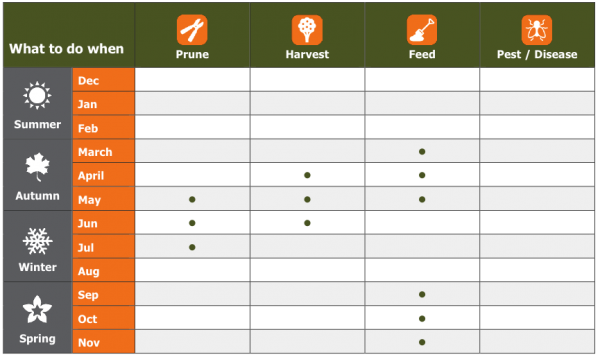
Common Name: Olive
Botanical name: Olea europaea
Summary
An extremely hardy and long lived evergreen tree that is generally kept small for ease of cultivation, but can be utilised as a shade tree, screen, hedge or even topiary.
Originally cultivated around 4000 BC in the Eastern Mediterranean with trade making it a staple food right across the Mediterranean by 2000 BC.
Large tired trees can be drastically cut back to promote rejuvenated growth, however care should be taken to reduce sun scald on exposed old wood.
Likes
- Full sun
- Long hot dry summers
- Cool winters to stimulate flowering
- Will tolerate -9c but at -2c blossoms may be harmed
Doesn’t like
- Shade
- Humidity
Flowers in
Late spring with sprays of perfumed white flowers
Fruits in
Ripens in late Autumn
Care
Planting
Free draining soil, avoiding the hot times of the year.
Pollination
Partially self-fertile but cross pollination with another tree is advised.
Pruning
Train to an open vase shape, removing over vigorous growth and keeping the centre open to sun shine. Fruiting on last season’s wood, regular clipping after harvest will promote new fruiting wood.
Disease and pest management
Olive scale, treat as per any other scale insect; white oil etc.
Moisture
Highly drought tolerant but will perform better with supplementary water during flowering, fruit set and as fruit ripen.
Feeding
High nitrogen NPK in autumn and spring.
Harvesting
Olives for oil are left until fully ripe and black. Table olives are picked a little earlier when still a little yellow/green.


